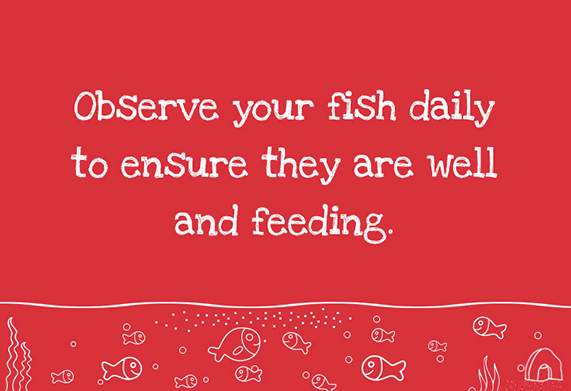Fungal and bacterial infections
Bacterial infections tend to occur in bad water conditions. Low levels of disease-causing bacteria are always around in the aquarium.
The bacteria and fungus that cause fish diseases are always present in aquariums (although specific species may be introduced with new fish) but will rarely cause a problem if you have good water quality and healthy fish.
Avoiding stress and keeping healthy water conditions are key to avoiding fish disease. Regularly test your water for abnormalities in ammonia, nitrate, nitrite, pH – and correct any problems, if necessary.
Poor aquarium hygiene and poor water quality are the key factors in most disease outbreaks.
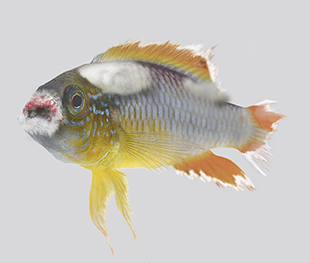
Fungal diseases; cotton wool disease, mouth rot, fin rot, and body fungus, are often a secondary infection of an open wound or damaged scales, caused by:
- aggression from other fish in the aquarium, either fighting or when breeding.
- damage caused by handling such as netting fish.
- parasite infections cause have a two-fold impact; firstly, the parasite creates a small opening on the skin allowing disease in. Secondly, the irritation of the parasites cause the fish to scratch and flick against objects, resulting in scratches and wounds.
- ulceration from an internal bacterial infection.
Mouth Fungus – otherwise known as mouth rot – is caused by Flavobacterium bacteria and is especially common in newly imported fish.
In the early stages of infection, you’ll probably notice off-white marks around the mouth, fins and body. As the infection spreads, white, fluffy cotton wool-like growths will appear around the mouth and, if left unchecked, the lips start to ulcerate and rot.
Other symptoms include reddened ulcers on the body and frayed fins (Flavobacterium can also cause fin rot). Affected fish will start to ‘shimmy’ as the infection agitates them. They may also go off their food, making them look thin or emaciated. They will usually also show typical signs of stress by clamping their fins to their body going pale and lethargic.
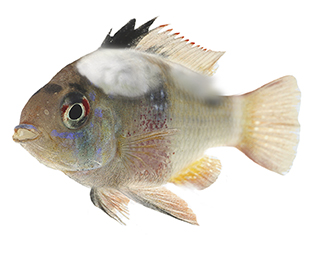
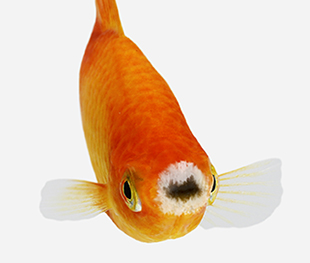

Fin rot can be caused by various bacteria including: Aeromonas, Pseudomonas and Flavobacterium. The obvious symptoms of fin rot are split, raggedy or stumpy fins and tail, often with a white edge and red veining. Your fish may suffer from fin rot and cotton-wool disease at the same time; they can be caused by the same bacteria and are encouraged by similar poor water conditions.
Fungal infections tend to appear when a fish has broken skin. There are several reasons that a fish may have skin damage – as shown in the blue panel above.
If fighting is causing problems, consider re-homing fish that are being aggressive with your existing fish.

You can treat mouth fungus and fin rot with Anti Fungus and Finrot to attack the bacteria. You can also support the health of your fish by using Aquilibrium First Aid Salt with the treatment.
Click through for our step-by-step diagnose and treat guide.
.
So what’s the solution?
Treat fish with obvious ulcers, wounds and fungal diseases using Anti Fungus and Finrot which is both an anti-bacterial and anti-fungal treatment.
Observe the behaviour of the fish to ensure there is no fin nipping or fighting that will encourage further outbreaks, and address all the above points to prevent worsening, or repeated infection.
Using Aquilibrium First Aid Salt with the treatment will help your fish recover, it works as a supportive tonic, making the natural processes fish use to stay alive far easier to manage.
Key areas to consider and regularly monitor to prevent outbreaks and aid recovery:
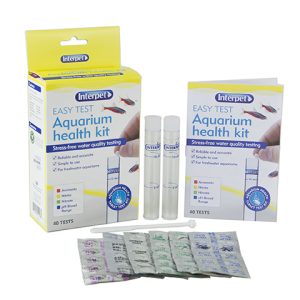
- complete regular aquarium care maintenance
- regularly test water for abnormalities
- consider a quarantine before introducing new fish to an established tank
- use Disease Away as a preventative treatment – especially when adding new fish

